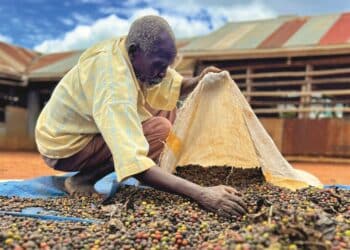Matteo Barbarossa of IMA Coffee reveals where he believes the industry is heading and how companies can best prepare and pivot.
To stay ahead of the curve and keep their products relevant in an ever-changing market, coffee companies are constantly tracking trends and analysing consumer behaviour. Anticipating what will happen isn’t easy, but there are a few hints as to what the future may hold for the coffee industry.
In March 2025, some of the sector’s most experienced thought leaders were asked to explore the future of coffee as part of Melbourne International Coffee Expo (MICE)’s comprehensive series of educational panel discussions.
Matteo Barbarossa, IMA Coffee Hub Area Manager for Australia and New Zealand, was one of the speakers to take part. He discussed the evolution of coffee products, consumer trends, and taste preferences, and says the million-dollar question was the direction the industry would take over the next five years.
“One trend I’m seeing is a growing collective consciousness among customers about what they’re drinking, where it comes from, how it’s processed, and how it’s brewed,” says Barbarossa.
“A coffee isn’t just a coffee anymore. It’s a full pleasure experience condensed into a cup. The future of coffee is about more than just taste – it’s about meaning, wellness, and connection.”
Outlining how speciality coffee is no longer a niche, he emphasises consumers are becoming increasingly discerning about what they ask for in their morning cup.
“This thirst for knowledge is driving demand for single-origin and micro-lot beans, transparent sourcing, and high-quality cultivars with unique flavour profiles,” he says.
Biodegradable and reusable packaging, as well as supply chain transparency, are reshaping how ethical sourcing is communicated to consumers.
“We’re seeing pressure for regenerative farming practices and carbon-neutral supply chains, and sustainable packaging becoming the norm,” Barbarossa says.
With climate change challenges affecting coffee farmers on every continent, innovative companies are looking for alternatives to traditional agriculture.
“Alternatives such as lab-grown and molecular coffee are emerging. Barley-based ‘coffee’ for caffeine-free consumers is also on the rise, as well as hybrid drinks that blend coffee with tea, juice, or plant milks,” he says.
Something the IMA team are particularly interested in is stimulus repetition, the act of repeatedly exposing consumers to the same or similar sensory cues to shape preferences. They believe the Mere Exposure Effect concept, theorised by social psychologist Robert Zajonc, could help form coffee preferences.
The concept suggests the more we encounter something, the more we like it.
“Customers often need a narrative to attach to flavour, so repeating explanations about tasting notes or process can help them develop a preference through cognitive anchoring.”
This theory can be used to justify the notion that coffee isn’t just about the taste – it’s also about the story.
“Repetition doesn’t always mean offering the exact same product. It can be curating a set of sensory experiences that reinforce a theme or category,” he says.
Barbarossa explains that through having a consistent tasting language across menus, the customer’s palate is shaped and refined via gentle cues.
“When a customer always starts their day with your coffee, the repeated pairing of the coffee with routine builds attachment, it becomes emotionally loaded,” he says.
Barbarossa also believes coffee capsules hold potential to create a more targeted experience.
“We’re seeing more specialty producers applying the same precision to capsules as they do to whole-bean offerings,” he says.
Unlike espresso or filter coffee, capsule brewing presents unique constraints, including low water volume, high pressure, and short brew times.
“Roasting for capsules is a different art form,” he says. “Only a handful of experienced roasters really know how to hit that sweet spot.”
Compostable capsules, once thought to be a compromise on quality, are now closing the gap thanks to plant-based materials with new gas barrier technology.
“More roasters are now using biodegradable materials for their capsules,” he says.
“Some companies are also implementing blockchain-enabled QR codes linking to platforms that share the farm story of the coffee.”
These QR codes offer origin information as well as tried-and-tested brew profiles.
“As consumers invest in better capsule machines, roasters will push innovation by offering capsules that pair with smart home systems,” says Barbarossa.
“These changes are going to define the future of coffee.”
For more information, visit ima.it/coffee/
This article was first published in the September/October 2025 edition of Global Coffee Report. Read more HERE.





